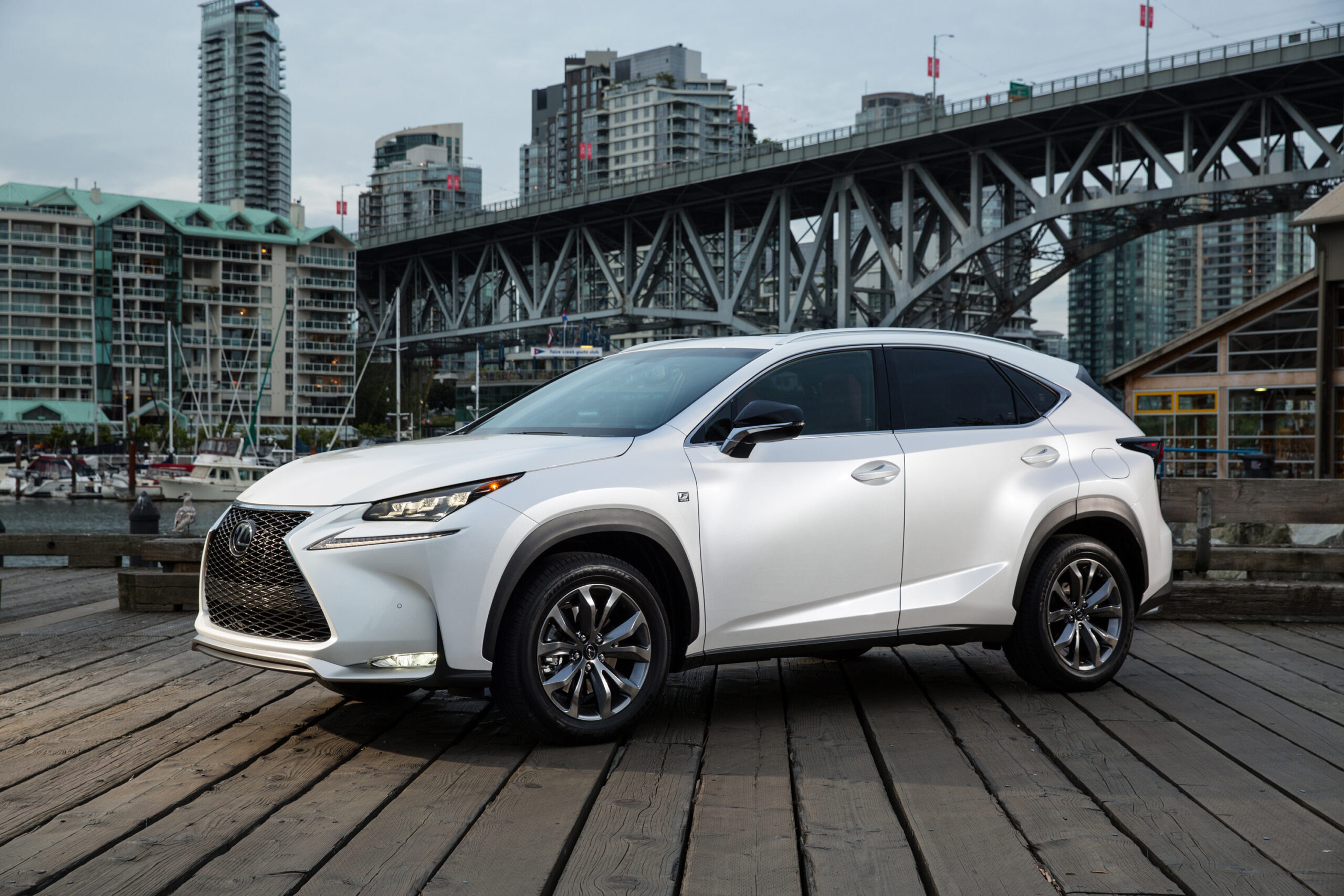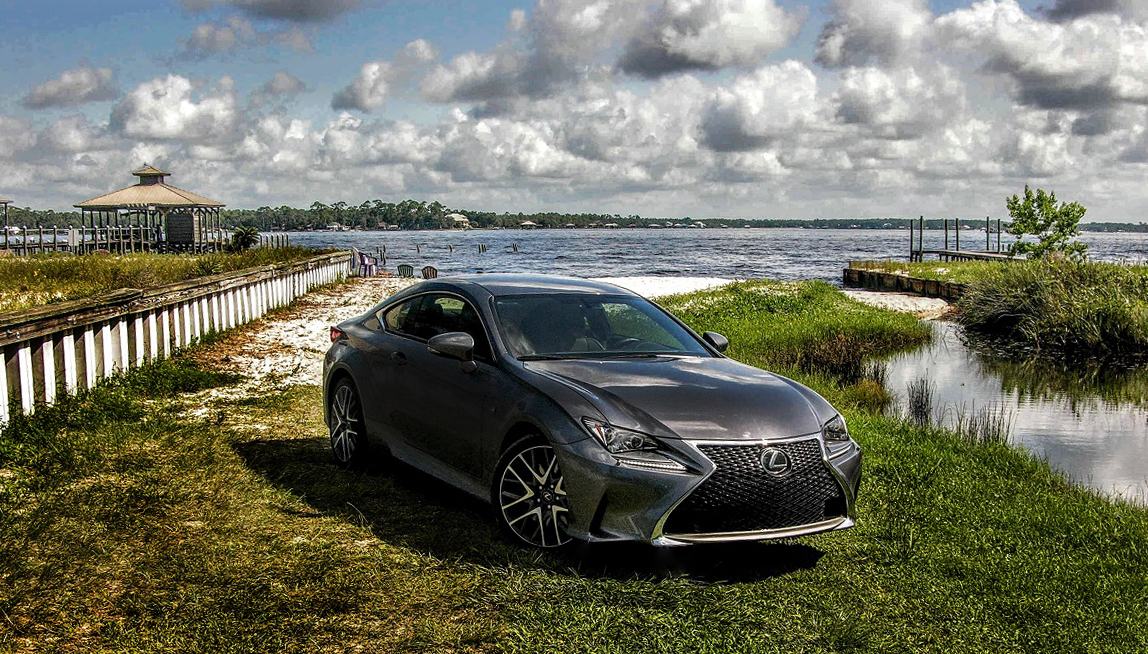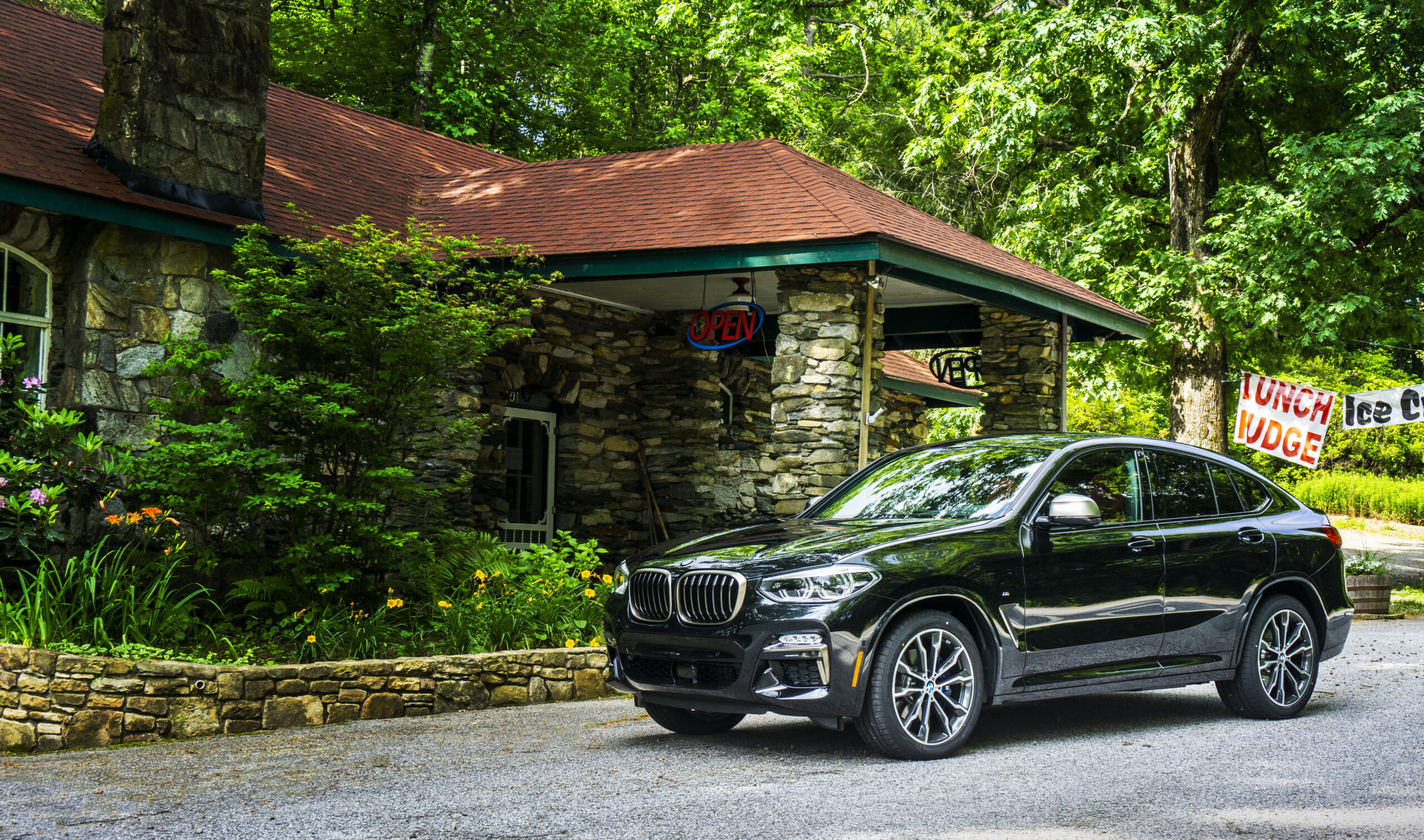Destination Barcelona: 2018 Volvo XC60
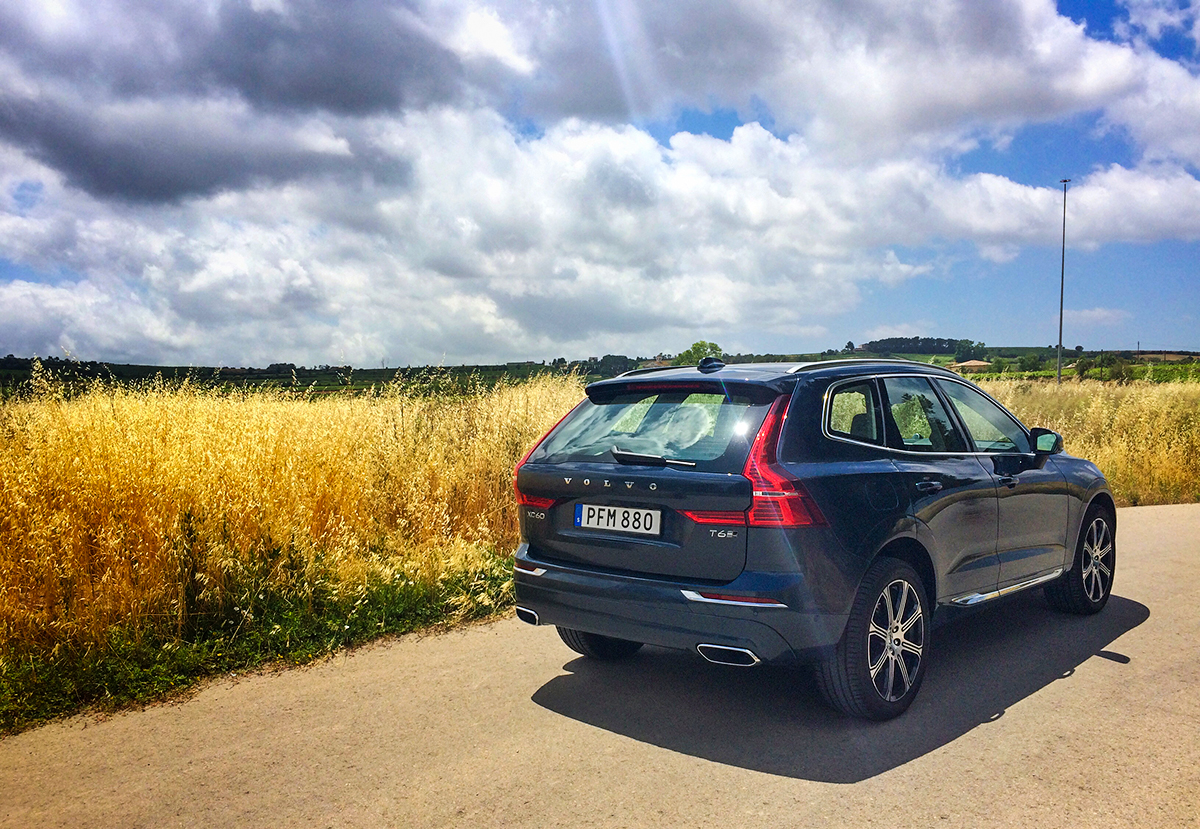
I could make this review of the Volvo XC60 the shortest in automotive history. The entire goodness of completely revamped compact luxury crossover from Gothenburg can be summed up in this one Instagram post from my recent test drive.
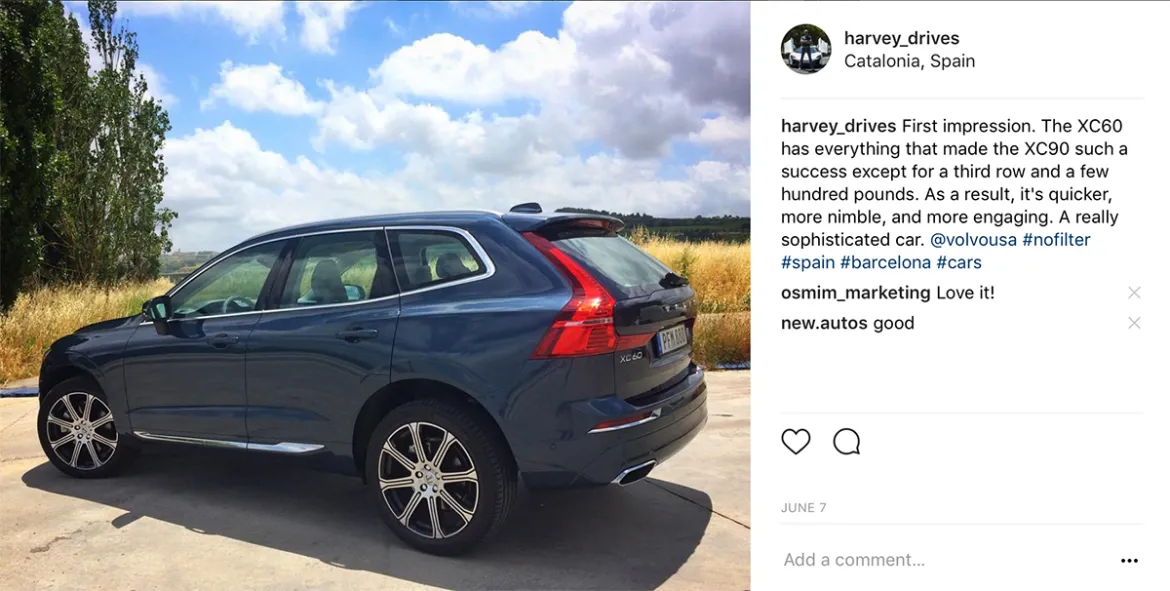
But since Volvo went to the trouble of flying me all the way to Barcelona to drive the new XC60, I’ll expound just a little bit.
They held the press launch in Spain because, even though it ranks 7th in the United States in sales behind the Lexus NX, Acura RDX, Audi Q5, BMW X3, Mercedes GLK, and Lincoln MKC for compact luxury crossovers, the Volvo XC60 is the best selling vehicle in its class in Europe and it’s the best-selling Volvo worldwide. So in addition to keeping it at the top of the heap across the pond, they’re hoping that by building the XC60 on the same Scalable Product Architecture as the excellent XC90, it will see similar sales growth to its big brother. After its revamp, XC90 sales were up 155% year over year. An increase like that for the XC60 would place it near the top of its category.
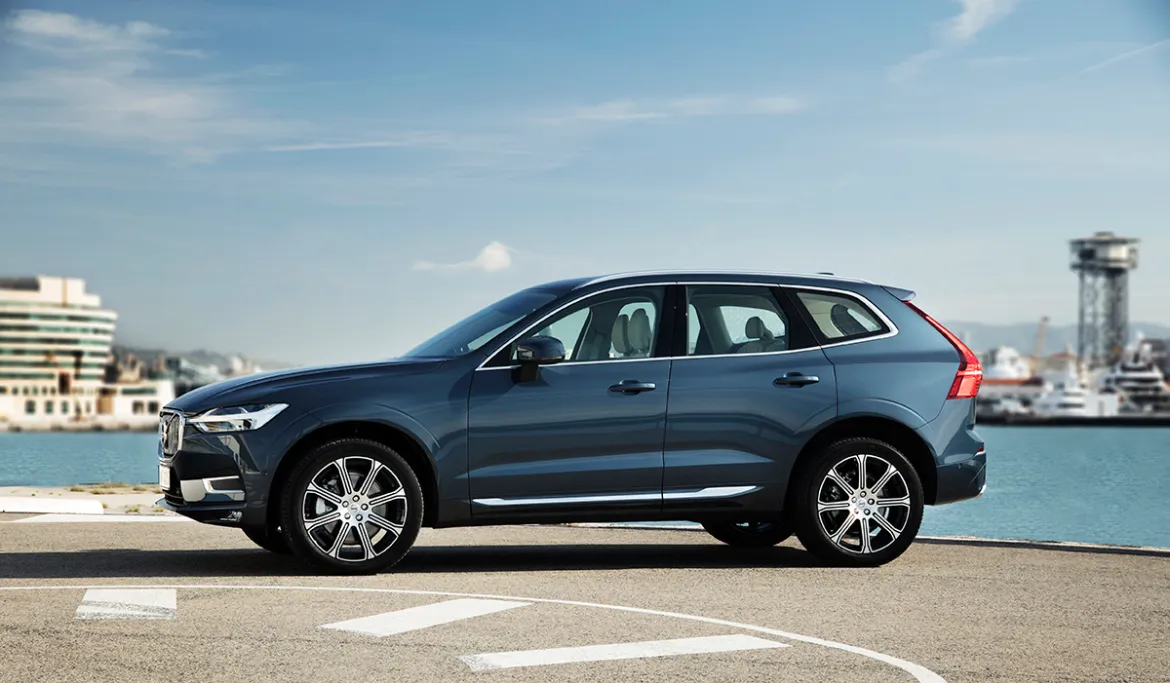
Outside, though the XC60 is nearly two inches longer, half an inch wider, and loses a tad over two inches in height, the updates at a glance seem minor and cosmetic. Up front you get the brand’s signature “Thor’s Hammer” LED headlamps and a slightly more upright grill with vertical chrome stanchions anchoring the diagonal logo bar. The greenhouse looks very similar to the previous generation, but the sheetmetal on the sides is more sculpted with larger, athletic fender flairs, especially at the rear. The defining feature of the SPA platform is the space between the front axle and the firewall. This constant means the front wheels are pushed slightly further forward adding to the SUV’s more aggressive look.
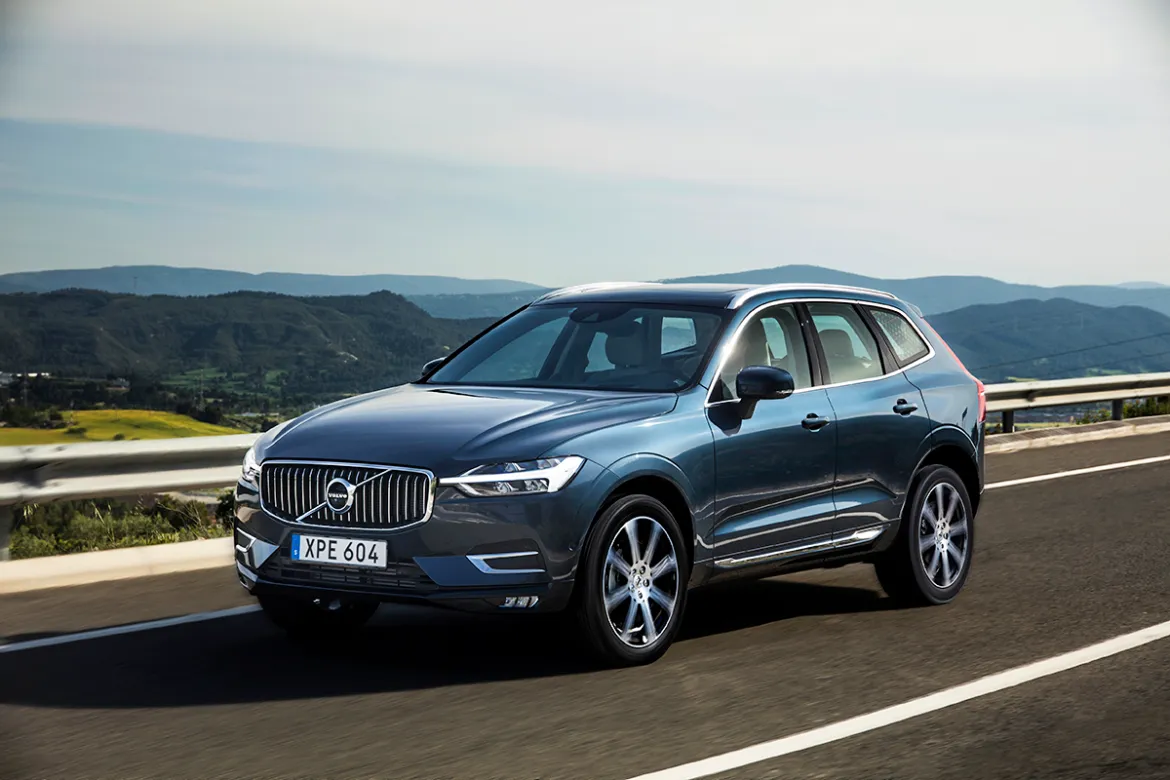
Walk around to the rear and the tail lights now feature a horizontal set of LEDs in the tailgate, the rear bumper resolves into the quarter panels more discreetly, and chrome-tipped, dual exhausts are pushed way out to the edges. These cues make the car appear even wider than the actual change from the previous model.
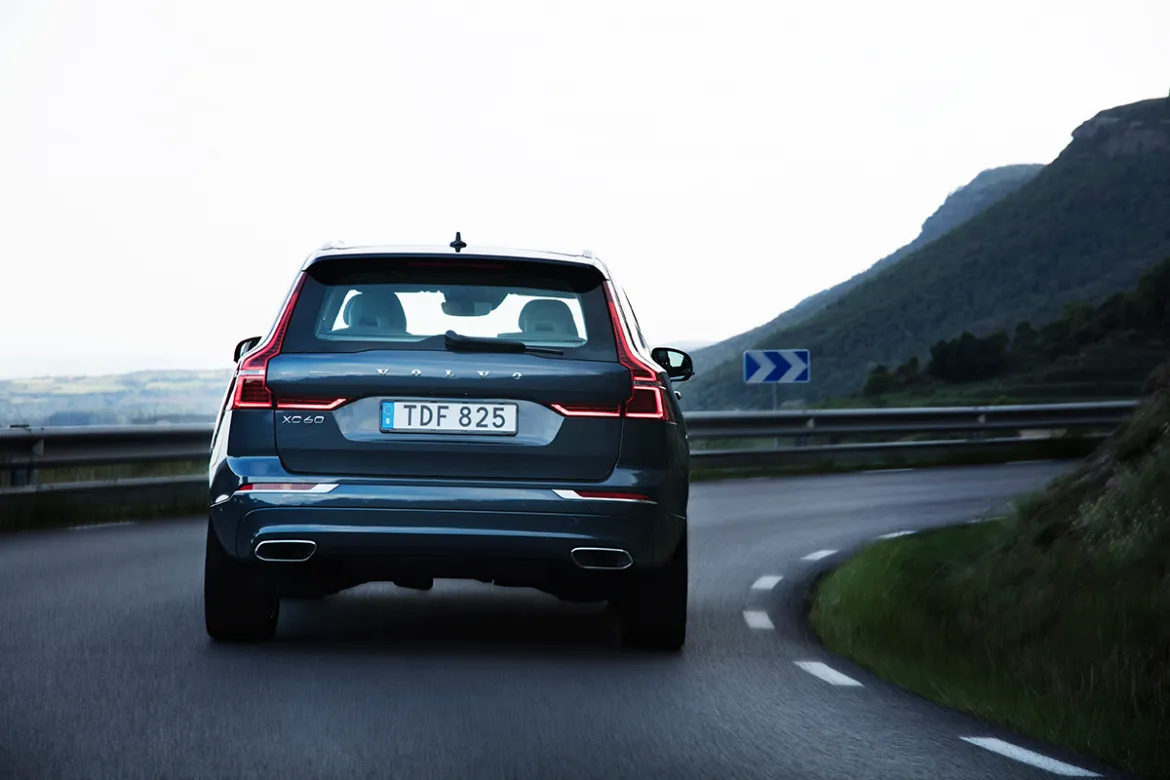
Inside, the top-of-the-line Inscription model is exactly what you’d expect if you’ve spent any time at all in an XC90. Exuding pure Swedish style, the XC60’s cabin is light, airy, simple, and elegant. Materials are purposeful and honest. It’s mostly soft leather, brushed aluminum with chrome accents on the control knobs, the starter switch, and drive mode select thumbwheel. There’s also a beautifully formed wave of wood in a matte driftwood that runs from the passenger side to the instrument panel adding another natural element to the cabin. The driver and front passenger seats in the Inscription model are heated and ventilated with an oh so welcome massaging function. This environment is all about comfort and serenity. This even extends to the back seat where legroom has been increased by one and a half inches and the outer passenger seats are heated as well. Although the new XC60 is not as tall as the previous model, headroom is reduced by just an inch (No worries, there was plenty for my six-foot, three-inch frame) and total cargo room actually increases to a very useful 29.7 square feet.
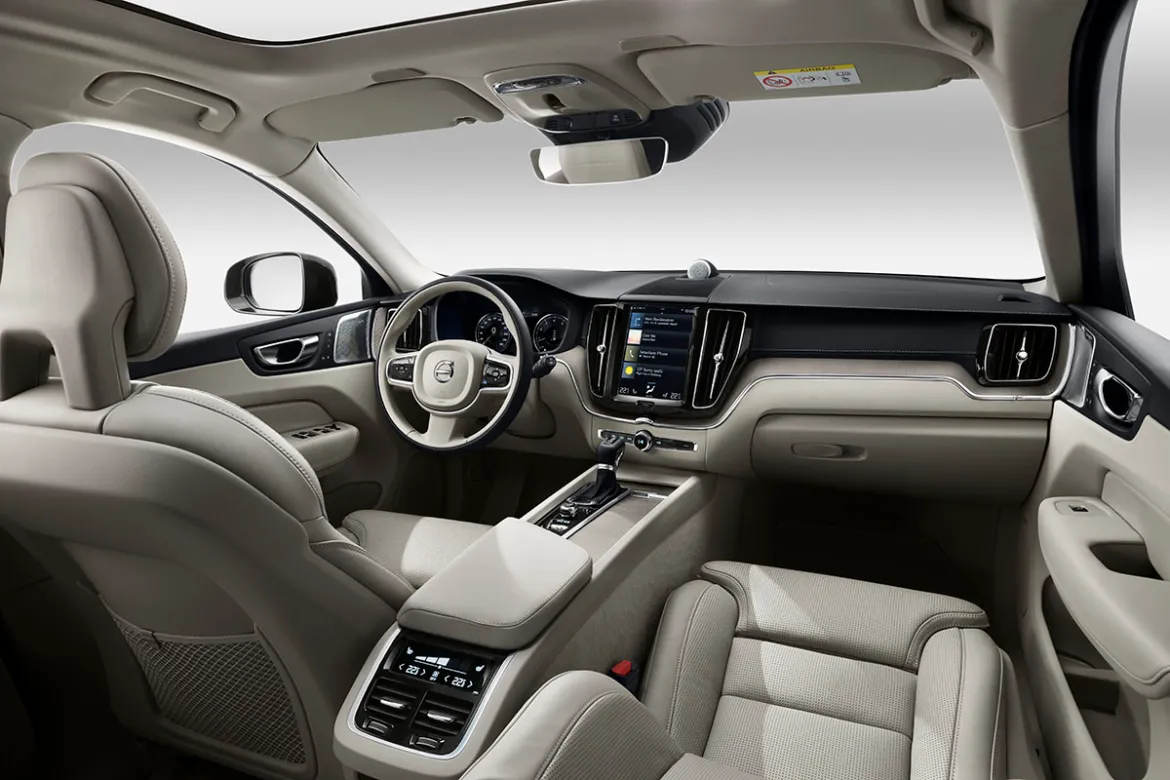
In-car technology is not only thorough, but well thought out. The XC60 gets an updated version of the brand’s Sensus system which allows you to control the information on the instrument panel and the center touch screen with a minimum of buttons and dials. If you’ve spent most of your time in a BMW, Mercedes, or Audi, this can take some getting used to, but Volvo worked hard to balance the systems usability by putting enough information on the home screen without making you dig through too many menus to find the operations you might use less often. Of course, the system is highly configurable. The center console display is basically a vertically mounted tablet that uses four tiles to present navigation, phone, entertainment, and a third party app of your choosing on the home screen. Touching on a tile expands that item giving you full control over the system. Unlike some other touch screen systems (I’m looking at you Cadillac) pointing, pinching, and dragging initiates action almost instantaneously. Climate control maintains a permanent space at the bottom of the touch screen regardless of what’s up top.
Another part of the Sensus system is the configurable instrument panel. In addition to the speedometer and tach that change depending on the drive mode you select, you can also customize the information at the center of the display to include anything from entertainment, to phone, or navigation, which came in really handy as I was driving on unfamiliar roads through the Catalan countryside. Then there’s the best premium audio system available in a luxury car. The Bowers & Wilkins audio adds significantly to the sticker price of the XC60 ($3,200), but it’s worth every penny. Specifically tuned for the XC60 by Volvo and B&W’s audio engineers, it offers excellent dynamic range at all volume levels. Multiple listening modes make can take you from the best seat in a concert hall to center stage with musicians surrounding you.
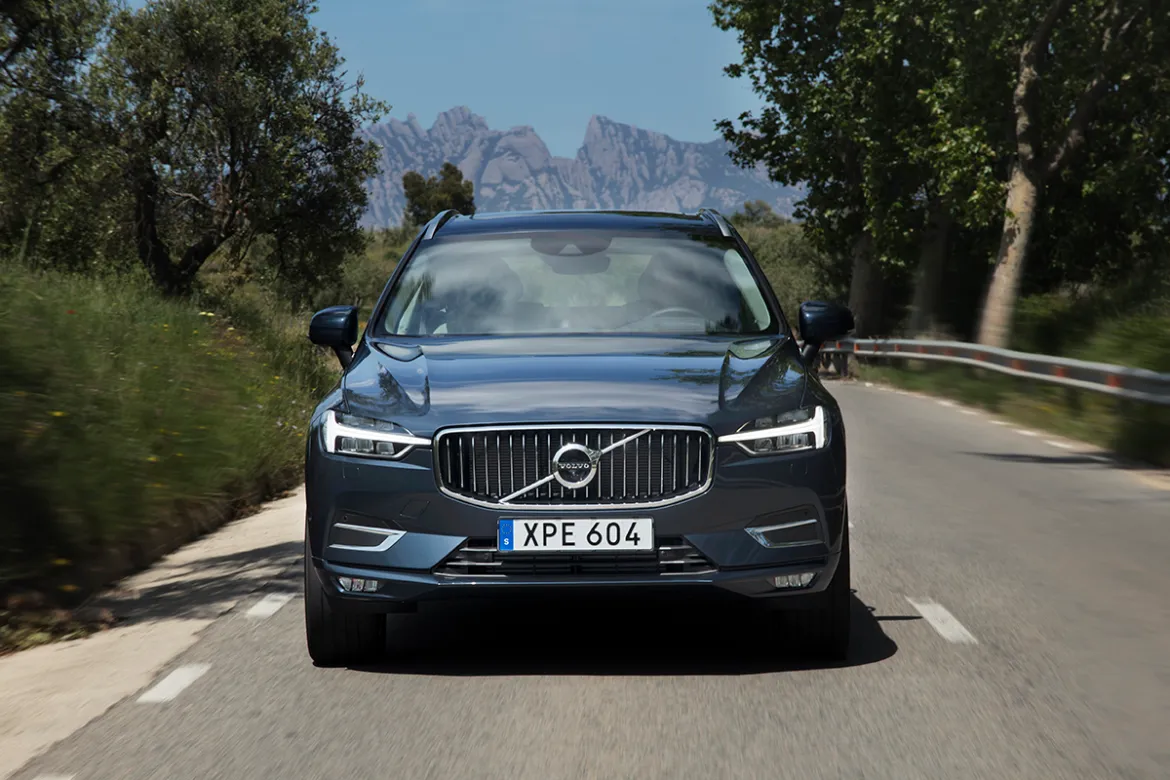
All of those features alone make the Volvo XC60 one of the most compelling compact luxury SUVs. Driving it cements it for me. The XC60 will be available in three trim levels – Momentum (base), R Design (sport), and Inscription (luxury) – with three engine choices – T5: 250 hp 2.0L turbocharged, 4 cylinder, T6: 316 hp 2.0L turbo and supercharged 4-cylinder, and T8: 400 total hp hybrid with the T6 engine driving the front wheels and an electric motor driving the rear. Every XC60 will come with all-wheel drive standard for the foreseeable future. We were only given the opportunity to drive the T6 Inscription variant on this trip and my overall impression is this engine, which had to work a little too hard to motivate the XC90, feels perfectly at home in a vehicle that’s 349 pounds lighter. The supercharger ensures the power comes on early and it pulls nicely across the powerband with peak torque extending from 2,200 to 5,400 RPM. Paired with an 8-speed automatic transmission, acceleration is quick and confident, with shifts happening seamlessly regardless of which drive mode I was in.
Handling, which wasn’t bad in the XC90, is also improved. That has to do with both less mass and a lower center of gravity. The XC60 cornered confidently as I drove it spiritedly along the winding mountain roads that parallel the Pyrenees. In Inscription trim, paired with the optional air suspension, the car corners relatively flat and I never felt like I was anywhere near the edges of adhesion no matter how hard I pushed it. The all-wheel drive system’s torque vectoring helps with this, as does the car’s overall balance. While definitely not a sports car in this trim, I have no doubt that with a stiffer suspension, the XC60 R-Design will provide plenty of thrills for its pilot.
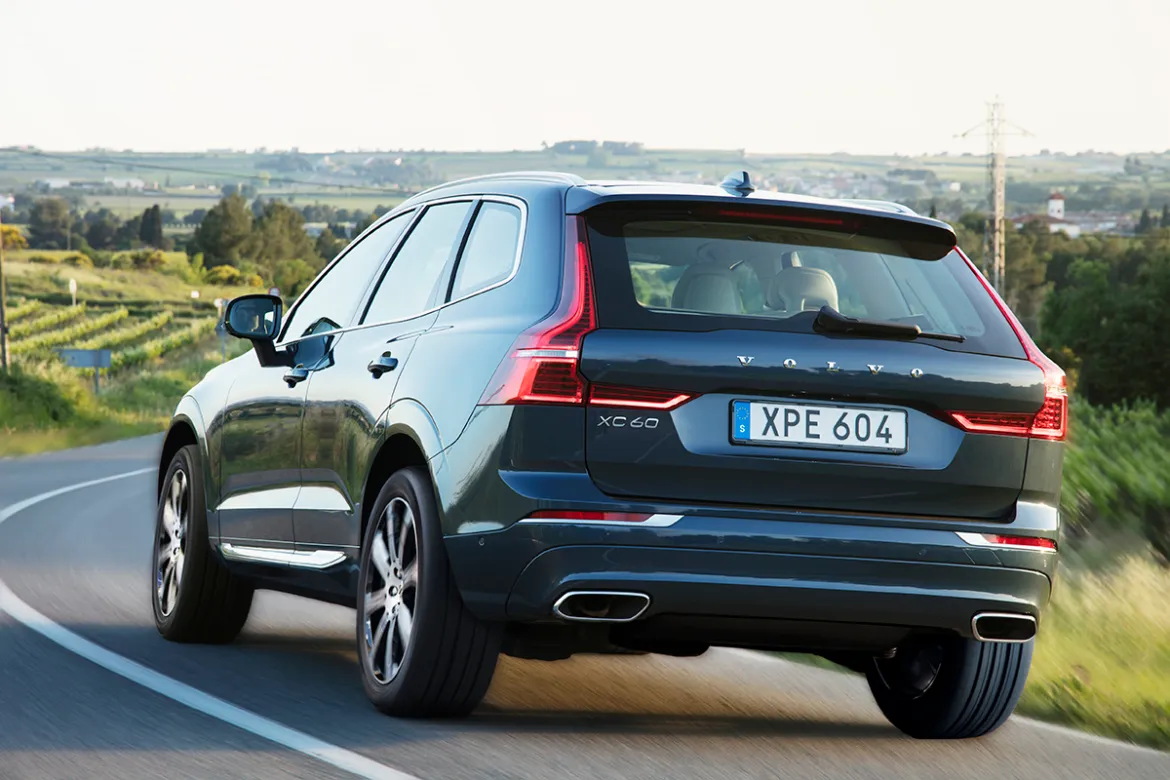
On the drive back down from the mountains into Barcelona, I did get the opportunity to play with Volvo’s semi-autonomous Pilot Assist system. Our tester came with the full suite of safety features including adaptive cruise control, lane departure warning and lane keep assist, automatic emergency braking with pedestrian detection, rear cross traffic alert, blind spot warning with steering assist, run off road assist, and oncoming lane mitigation. All these systems are designed to enhance driver capabilities, not serve as a substitute for them. In talking to the engineers who were on site, Volvo has decided to limit their autonomous systems at Level II until they’re ready to go all the way to fully autonomous Level IV and V vehicles. They’re concerned about potential confusion with hand-offs between the driver and car required in Level III that can cost lives (see Tesla). With a stated vision that no one will be killed or seriously injured in a Volvo car by the year 2020, Volvo has been hard at work studying and implementing both active and passive safety systems. They’re also wading deep into human behavior which we all know is less than rational, and that’s leading them to err on the side of caution.
Years ago I attended a Skip Barber car control class at Lime Rock Park. One of the first things the instructor told me was that in emergency situations, most drivers use 40% of a car’s capability and then just give up. The typical driver’s training course barely teaches students how to parallel park, let alone get the most out of their cars, especially when adrenaline is flowing, pupils are dilating, and sphincters are puckering. Volvo deploys technology to aid in these situations. The result will be fewer deaths and injuries, but their cars will not completely take over the task of driving for some time.

I got a first hand demonstration of the autonomous emergency braking system in rush hour traffic in Barcelona as I was winding my way through the city’s complex grid of one-way streets trying to rendezvous with a fellow journalist at the Sagrada Familia. Traffic was moving briskly and in the millisecond it took to check for my upcoming turn on the nav system, a daring Spaniard on a Vespa cut me off triggering a series of beeps, flashing lights, and brake pedal activation that allowed me to complete the stop before I turned his scooter into a blood-spattered work of outsider art.
Which brings me to another reason I was glad this test drive took place in Barcelona. After I picking up my compatriot and making our way back to the Hotel Miramar, I knew there would be a glass of ratafia on the rocks ready to help put an eventful day in the rearview mirror. Because no matter how comfortable the car and how flawlessly its safety systems work, sometimes the best way to put the stress of a long day’s drive behind you is with a little local flavor. If it happens to be in the form of an adult beverage, so much the better.
¡Salud!
The 2018 Volvo XC60 will be available in August with both T5 and T6 powertrains. The hybrid T8 model will follow along this fall. Prices start at $41,500 for an T5 Momentum model. The T6 Inscription we drove starts at $48,700, and a T8 Inscription is $56,700 before adding any other options. Toss in all the packages, the Bower’s & Wilkins audio system, a few other doodads and you’ll be creeping up on $70k.
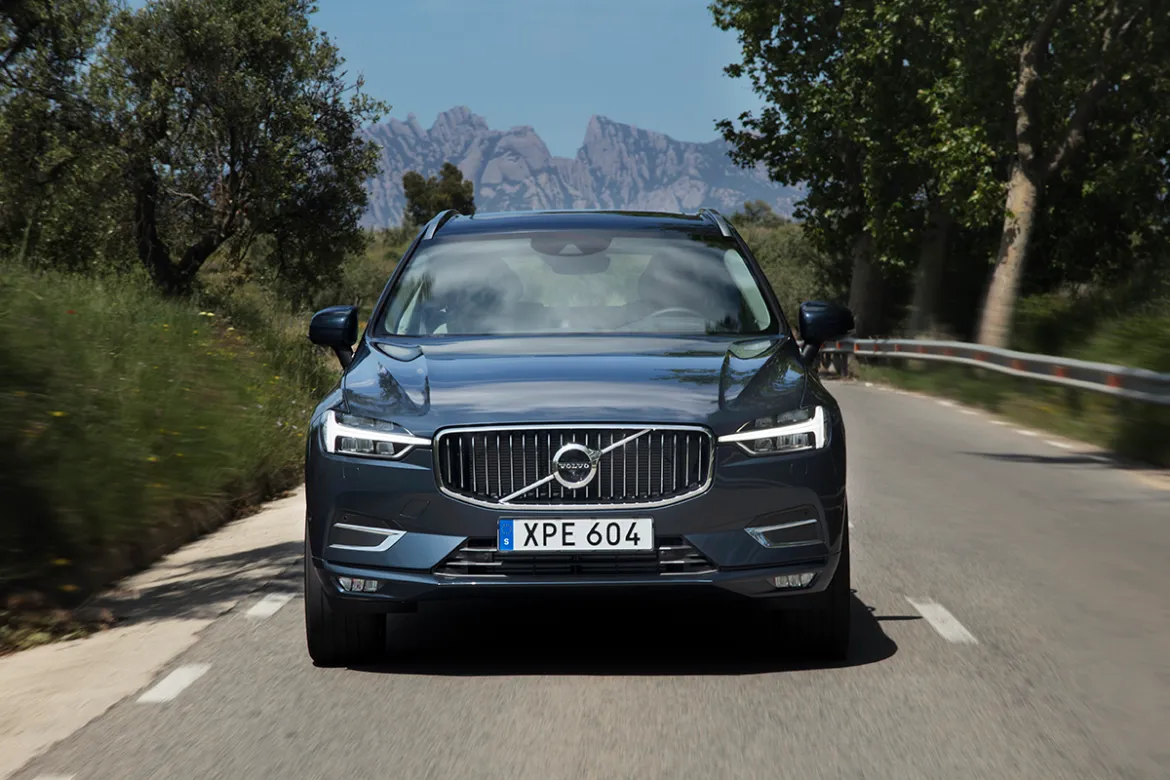
While Volvo paid for travel and provided the vehicle for this story, the opinions are 100% our own.

